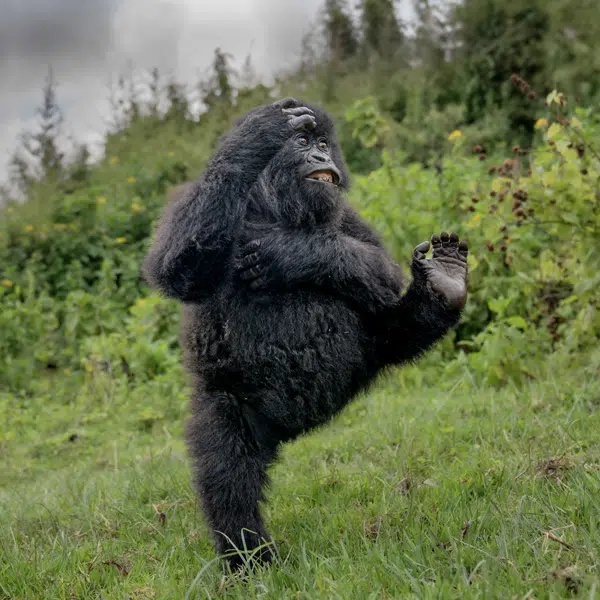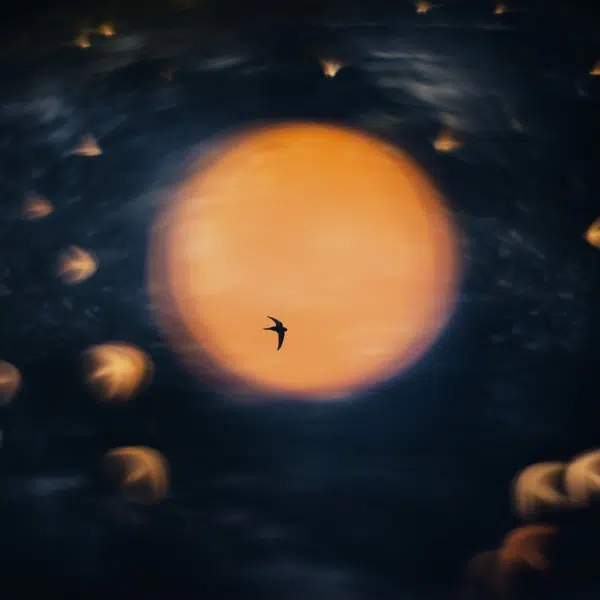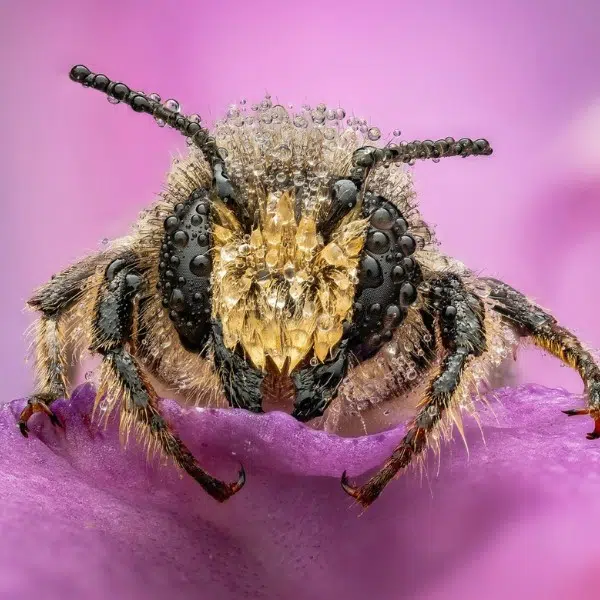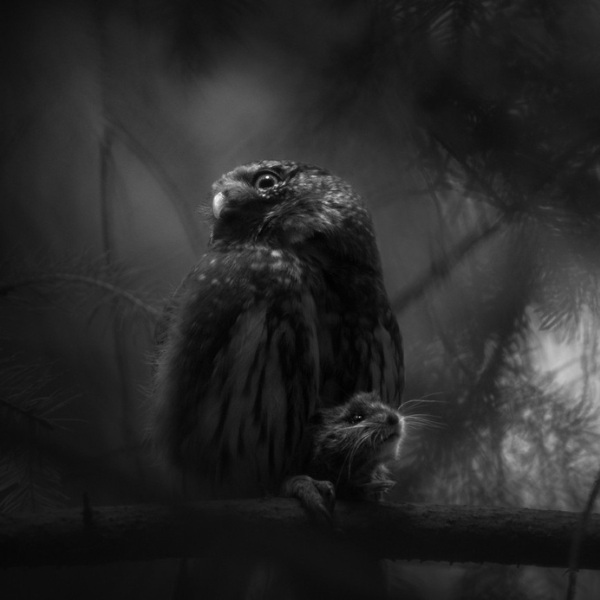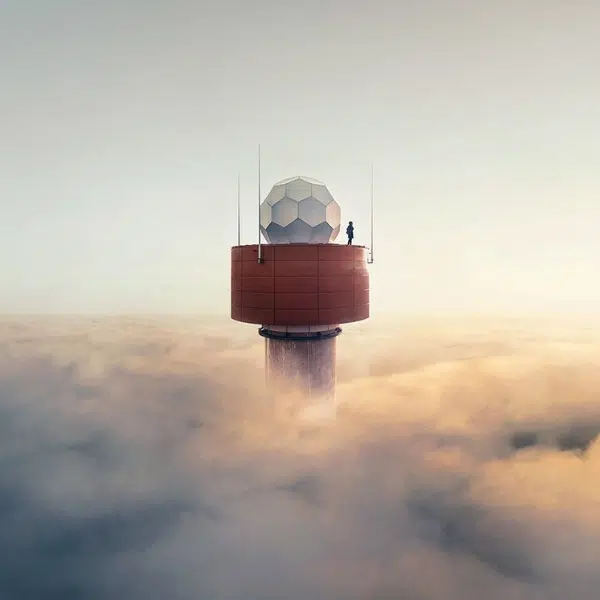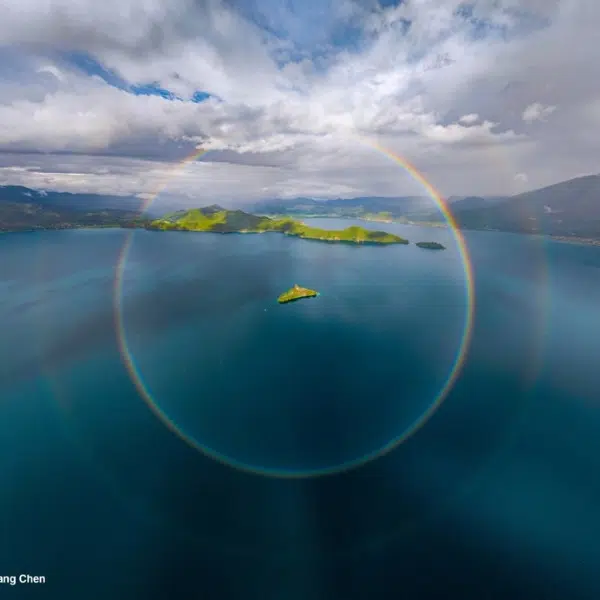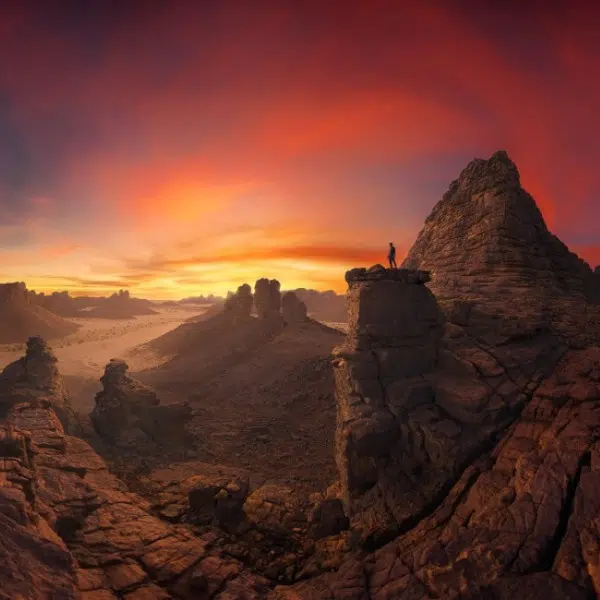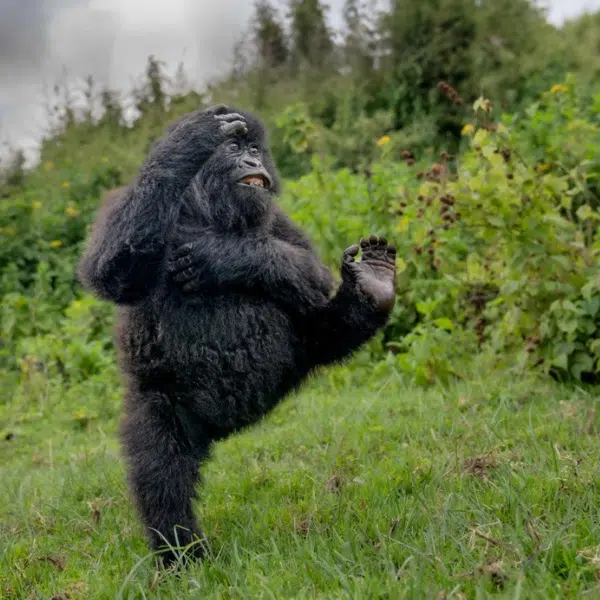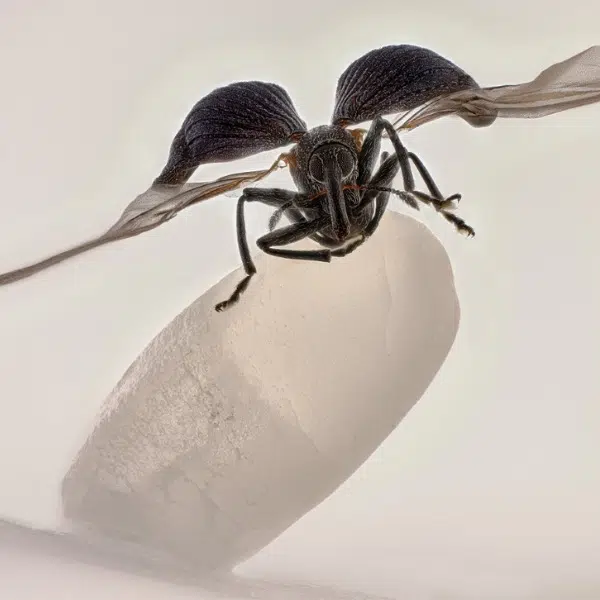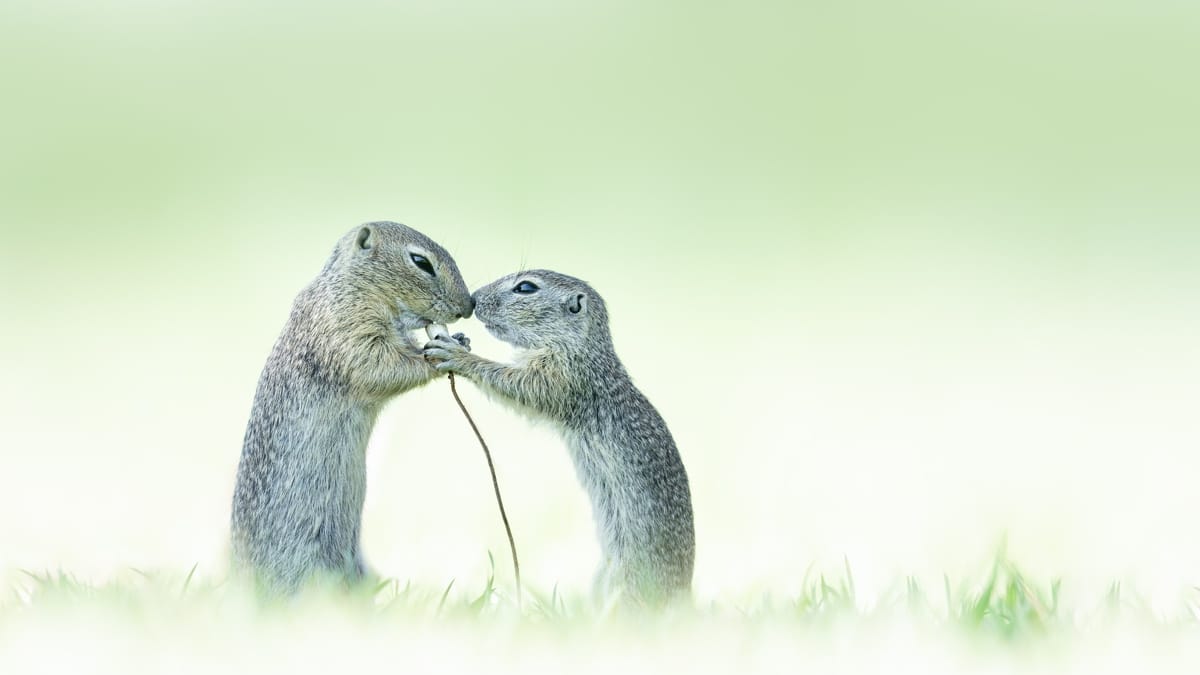
“True Love” by Alex Pansier (Netherlands). Overall Winner: CUPOTY CHALLENGE: Two of a Kind.
“European ground squirrels are classified as vulnerable, mainly due to habitat loss. These two were busy eating a faded poppy on a lawn in Vienna. I really enjoyed watching them working together, like father and son. For me, observing and photographing nature is a great way to unwind and share the beauty that’s all around us. I prefer compositions that are simple and pared back, and I usually shoot on dark and moody days, although this image has a lighter feel.”
The annual Close-up Photographer of the Year contest is always a feast for the eyes and shows us the world from a new perspective. After announcing the winners of their competition, the contest is giving us even more spectacular photography thanks to the CUPOTY Challenge. This themed challenge gives photographers a new chance to show off their work in close-up, macro, and micro photography. The theme of this year's challenge was “two of a kind,” and the results highlight all sorts of dynamic duos.
Winner Alex Pansier of the Netherlands took a lovable approach to the theme. His photo shows two European ground squirrels sharing a poppy. Nuzzled close together, the animals appear to share a loving camaraderie. Many of the winners and finalists chose to focus on wildlife and, in particular, insects. The images show them resting, fighting, mating, and playing. By getting up close, the photographers help us gain insight into these fascinating social dynamics.
Other images focus, instead, on plant life. Innovative and creative compositions abound, such as Angi Wallace's image of two cyclamen buds about the unfurl. These flowers appear to form a heart and Wallace's observational skills come into play as she was able to capture the moment just in time.
Tracy Calder, the co-founder of CUPOTY, was blown away by what the challenge brought out in the photographers. “These stunning pictures show the power of two, whether that’s two ground squirrels working together or two stag beetles battling for mates in a woodland arena. Yet again, entrants have shown that close-up photography can help us see the world anew and discover beauty in subjects that are often overlooked.”
These beautiful close-up photos show the wonderful world of pairs and the theme “two of a kind.”
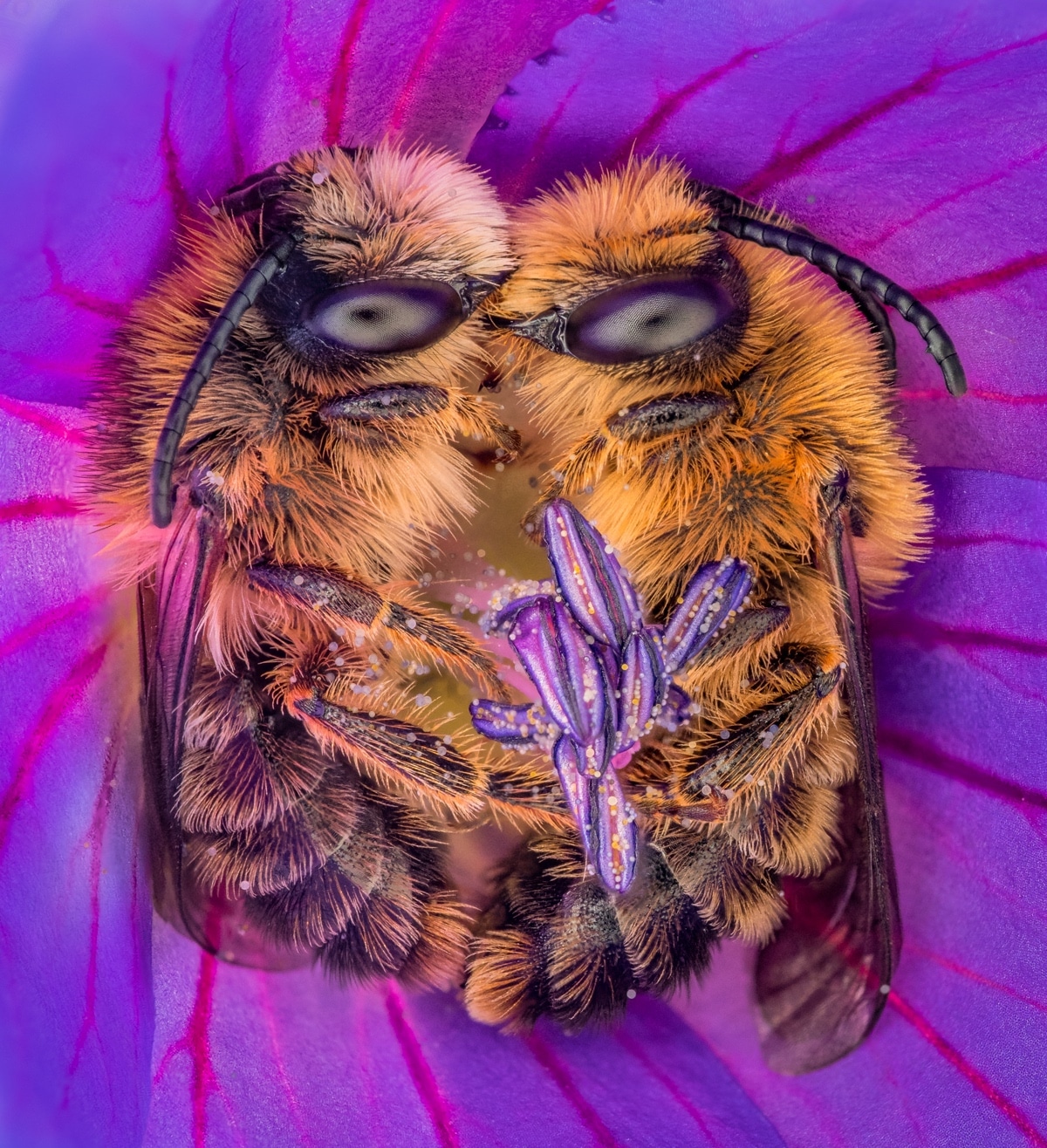
“Bee Together” by Joris Vegter (Netherlands). Finalist.
“In 2020 I found a bee sleeping in a flower. I hadn’t seen this kind of behaviour before, so I took a lot of pictures of it. The summer was almost over by then and I didn’t find another sleeping bee that year. In 2021, however, I set myself the goal of finding more bees sleeping in flowers. It took a lot of searching, but I eventually struck gold when I came across these lovely Gold-tailed Melitta bees. The pair were sleeping in such a lovely embrace that it made my heart melt. Many species of wild bee are endangered, so the more we understand and love them the better their chances of survival.”
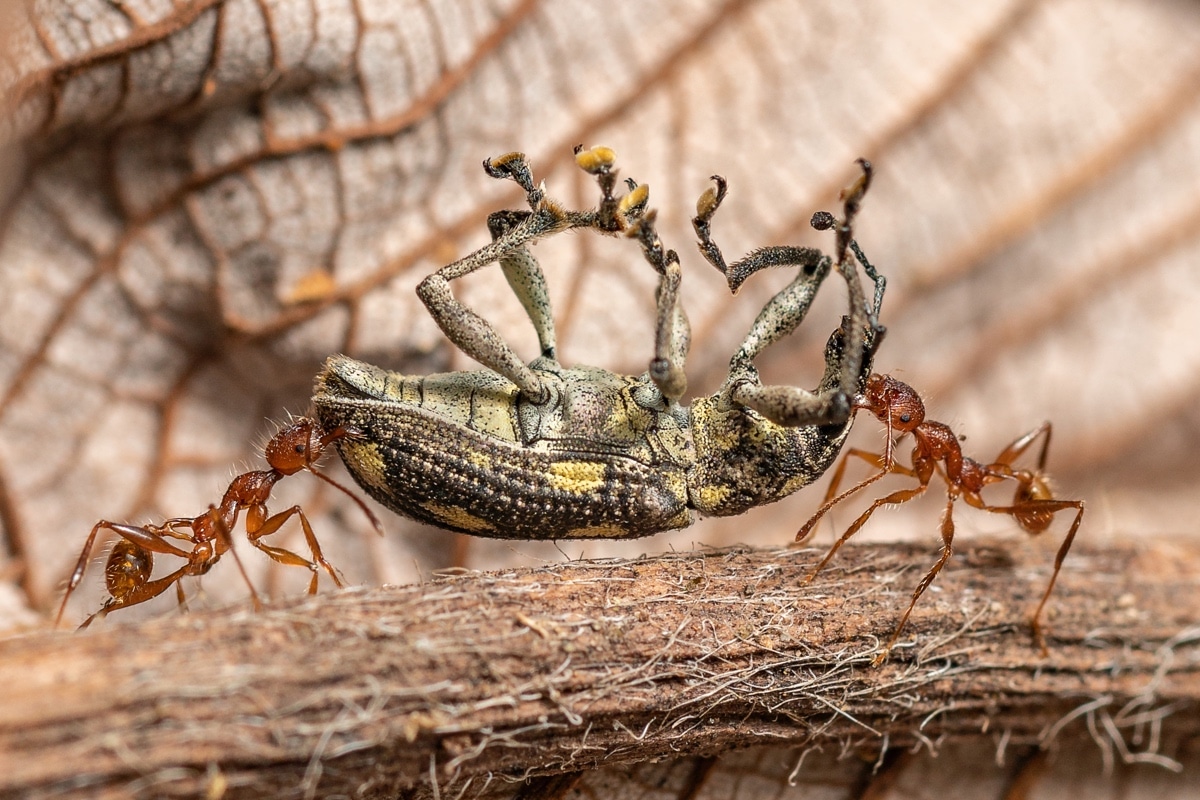
“Teamwork” by Roman Willi (Switzerland). Finalist.
“I saw two ants carrying a weevil in Monteverde, Costa Rica, and quickly took a shot from afar – I wanted to make sure I got at least one picture of this special moment. When I approached closer to get a better picture, the ants were already gone. As a result, the image is cropped quite a lot. I used flash and a DIY diffuser to freeze the action.”
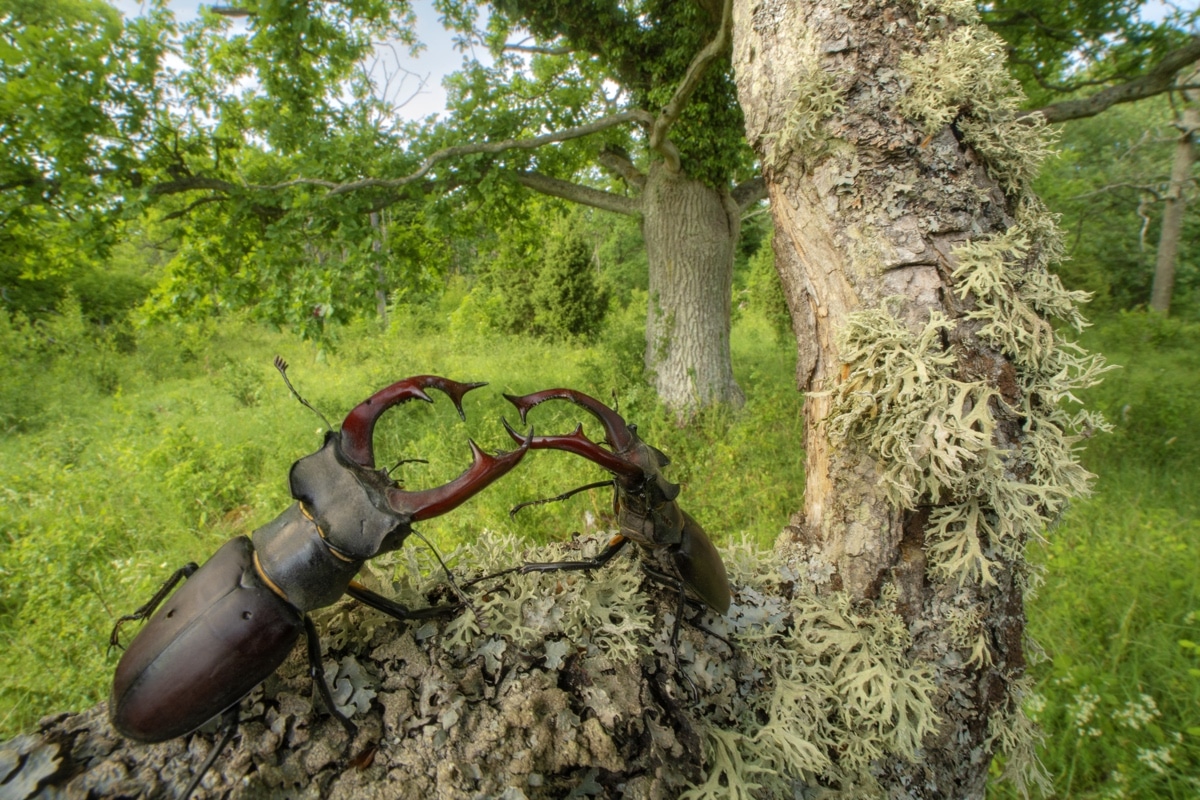
“The Fight” by Pål Hermansen (Norway). Finalist.
“Male European stag beetles (Lucanus cervus) use their sizable mandibles to impress potential mates and fight off rival males. I spotted these two sparring in southern Sweden, one of only a few locations in Scandinavia where populations can still be found. In early June the males appear in the oak forest, but their arrival is tinged with sadness because this iconic species is now on the IUNC red list as it’s considered “Near Threatened”. Numbers are declining across most of Europe due to habitat loss.”

“The Pear-fect Pair” by Heidi Egerman (USA). Finalist.
“This image is part of a series called Harvest. The pears were grown in my garden and picked before they reached the peak of ripeness. I left the stems and leaves on to add interest. To give the feeling of an old Dutch Masters painting, I used a light painting technique. The room was made extremely dark before setting a long exposure on the camera and “painting” specific areas of the arrangement with a flashlight (diffused). This technique takes a lot of trial and error to get right, but I think it’s worth it.”
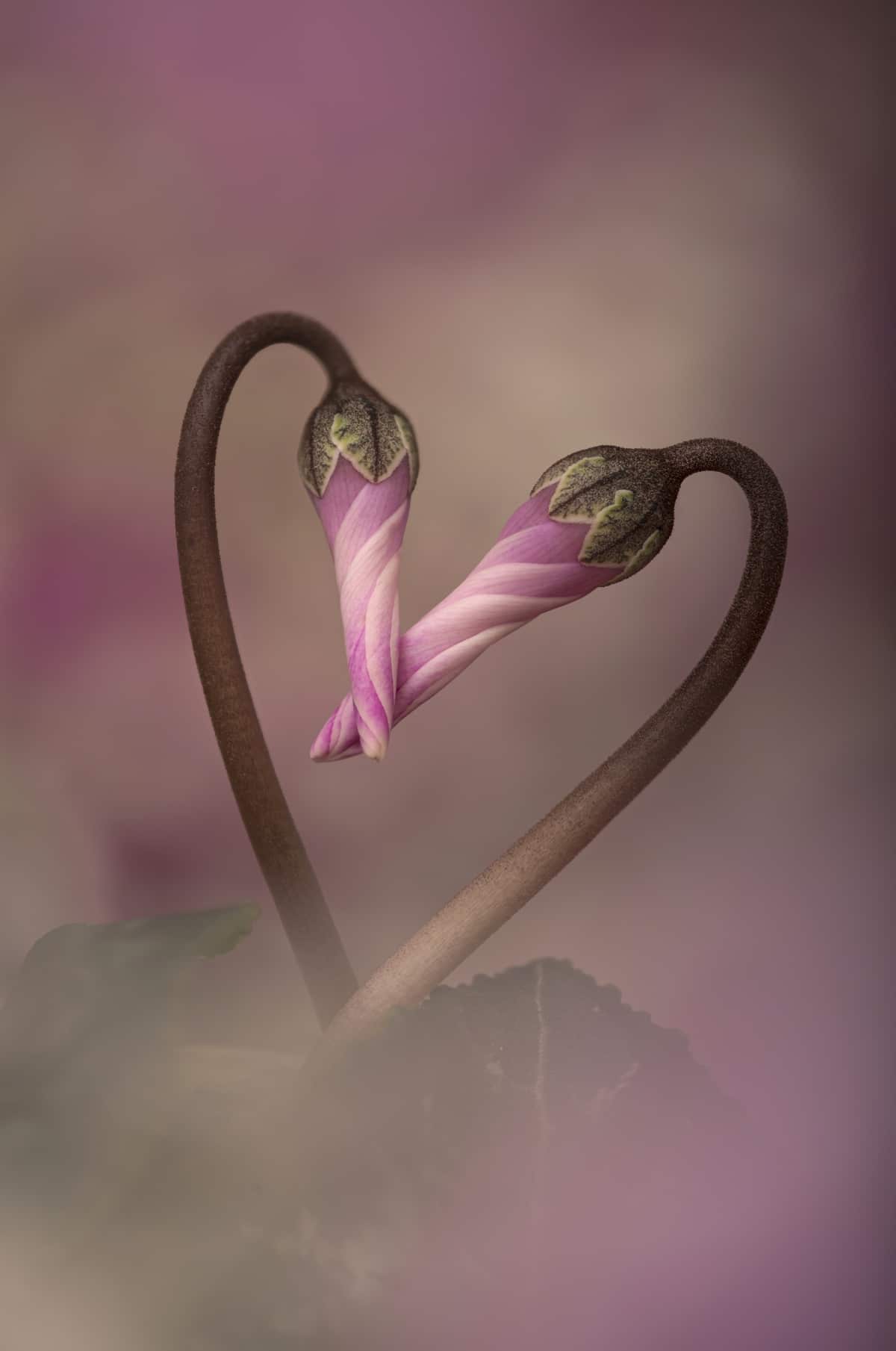
“The Kiss” by Angi Wallace (UK). Finalist.
“The details and pretty textures on the buds, leaves and unfurling flowers of the cyclamen in my garden really appealed to me. In this instance, the little nodding heads were forming a wonderful heart shape. I decided to isolate the blooms while keeping the surroundings soft and dreamy. To do this, I placed an out of focus print I ‘d made of some flowers about 2ft behind the cyclamen and added more pots of flowers in between. I then carefully placed petals in front of my lens to give a subtle pink haze. It took a focus stack of 18 images (and a burst of fill-flash) to get what I wanted.”
The images are part of the CUPOTY Challenge, a mid-year contest from the Close Up Photographer of the Year.

“Mature Comatricha” by Barry Webb (UK). 2nd Place
“These tiny (2mm tall) slime moulds were found on a dead apple branch, from a log pile in my back garden in Buckinghamshire. The spores have dispersed, leaving the delicate, thread-like capillitium. I carefully lifted the branch onto a garden bench and arranged some moss behind it to create a pleasing, natural background. The picture was taken in natural light and is the result of 56-shot focus stack.”
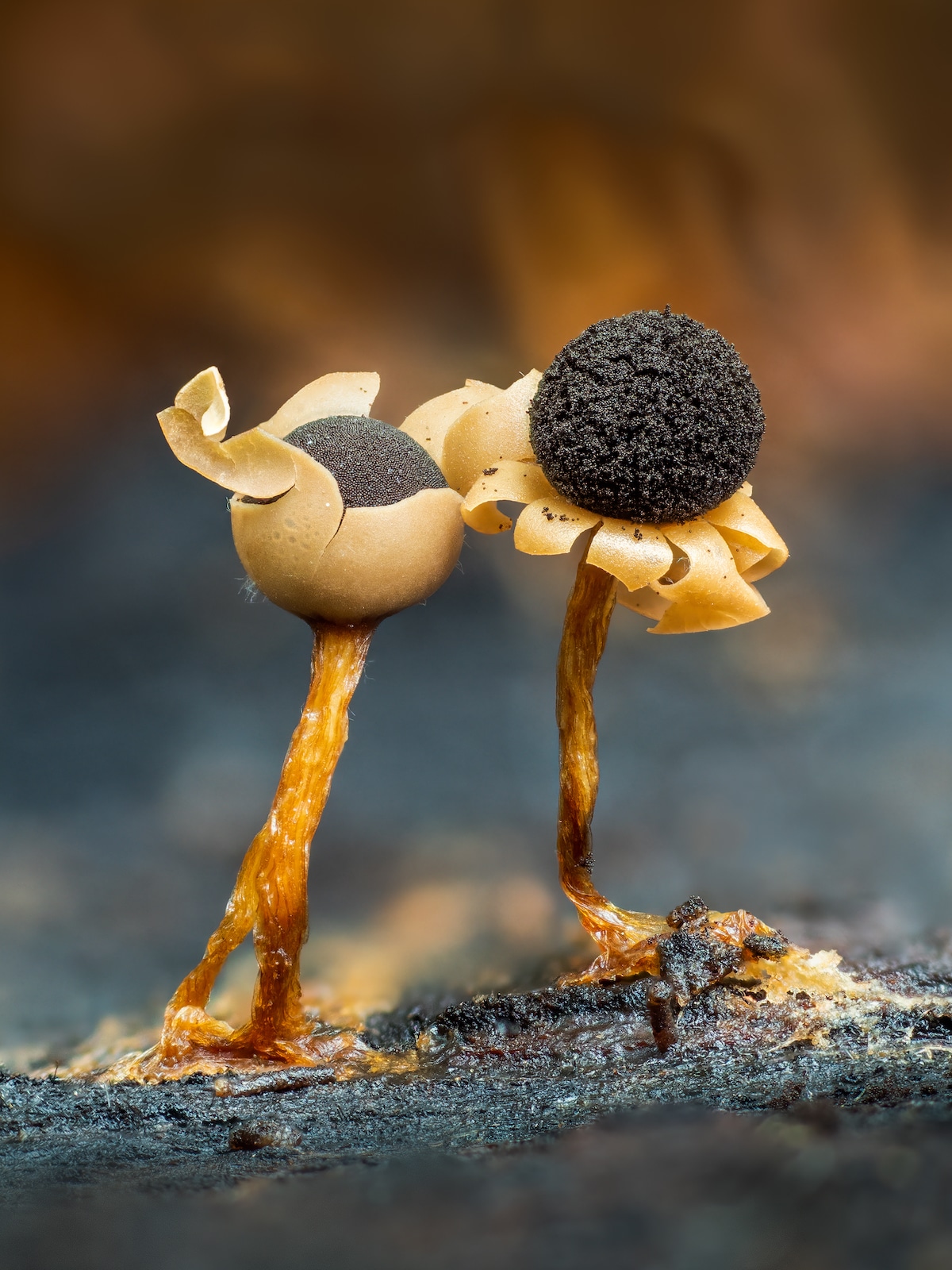
“Diderma floriforme” by Barry Webb (UK). Finalist.
“These, 3mm, Diderma slime moulds were found on the Ashridge Estate in September 2021. They were on the underside of a large, rotten beech branch on the woodland floor. I was fascinated to see how the peridium had split into petal like structures. When I researched their ID and discovered that they were called floriforme (flower shaped) it was easy to see how they had been given this name. This is a 100 shot focus stack.”
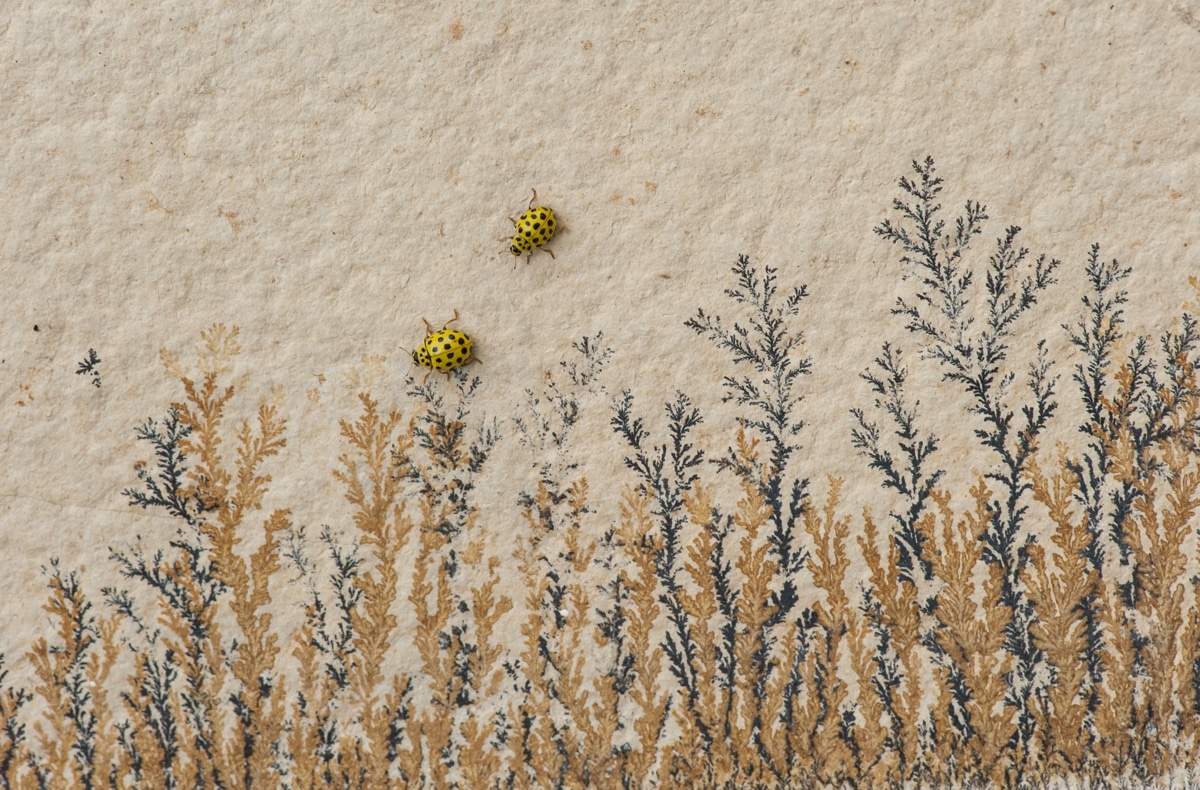
“Over the Mineral World” by Carlos Pérez Naval (Spain). Finalist.
“Natural wonders occur all around us, but most of the time we don’t even notice. I spotted these two yellow ladybugs (Psyllobora vigintiduopunctata) on a wall close to my school in Calamocha, Teruel, Spain. The insects themselves are pretty enough – with their bright yellow bodies and black spots – but it’s the mineral world below them that really makes this picture for me. The “drawings” in the rock are actually mineral precipitations of manganese oxide.”
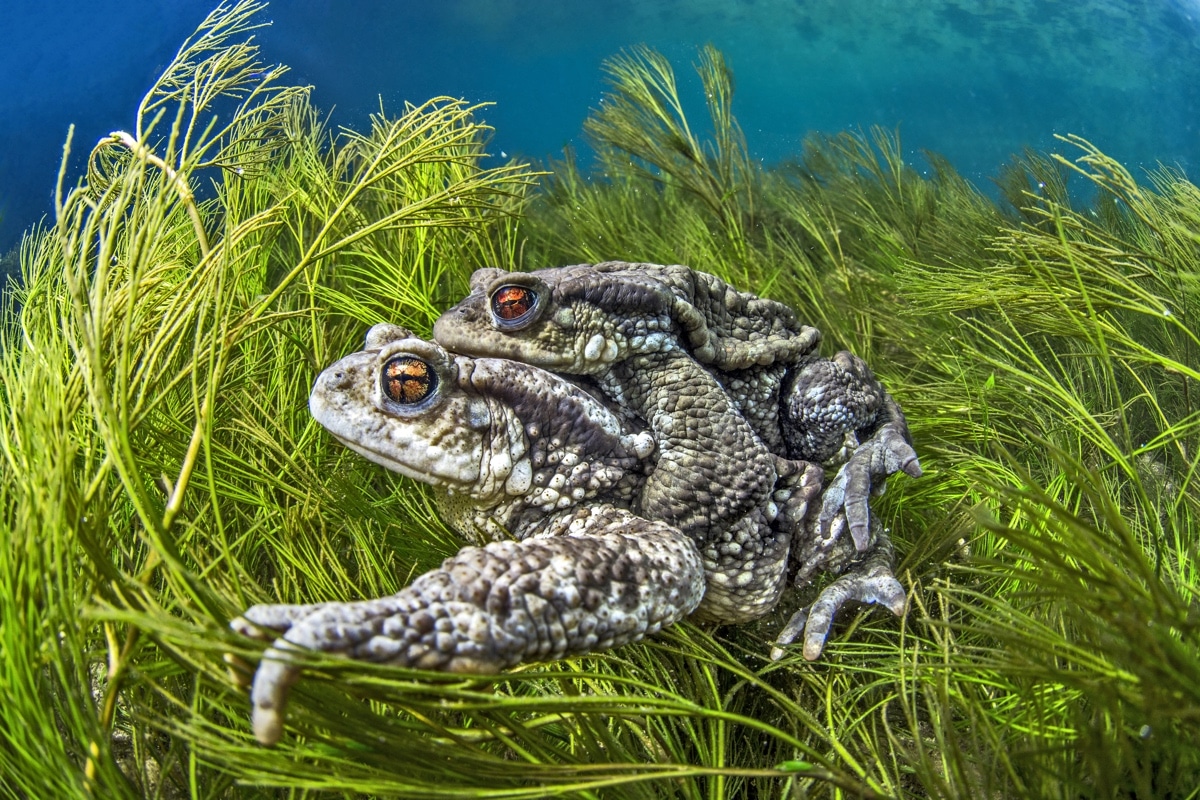
“Two Toads” by Mathieu Foulquie (France). Finalist.
“Two common toads (Bufo bufo), mating in the Buèges river, France. Wildlife will always offer you the most beautiful spectacle and the most unexpected encounters, even a stone's throw from your home.”

“Hey! What's that?” by Noelle Bennett (New Zealand). Finalist.
“These magnificent birds are New Zealand King shags – they’re an endemic New Zealand species occurring in one small area: Marlborough Sounds. It’s a situation that hasn't changed for more than 240 years. Unfortunately, this type of restricted distribution makes a species incredibly vulnerable. The only way to see King shags is by boat, which makes my lifestyle ideal, because I live on a yacht! Naturally, photographing from a boat presents its own challenges – even when it's calm there is usually some sort of swell, which creates movement. A tripod is no use here! The birds tend to inhabit rocky areas and, let’s face it, boats and rocks don’t mix well, so a long lens is essential. The final image is a composite, but each of the additional layers (there are two of them) was produced from the original single file.”
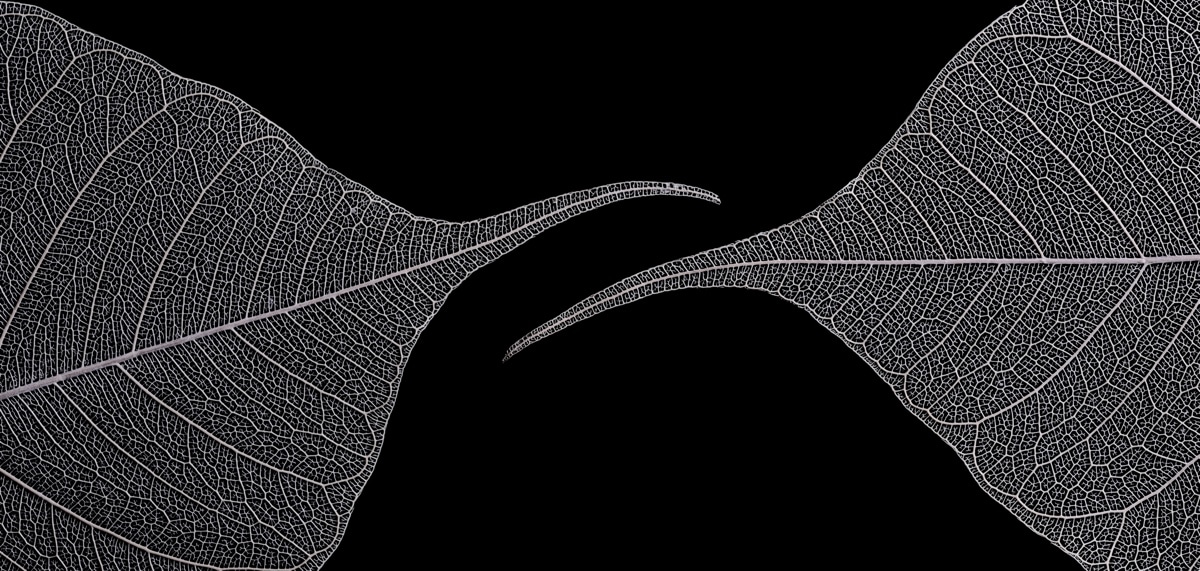
“Leaves of Lace” by Julia Briggs (UK). 3rd Place.
“The amazing detail and intricate patterns found in leaf skeletons remind me of lace, and that’s what I was trying to capture here. I placed two leaves on a black background next to a glass door in my conservatory, which gave me in plenty of natural light. Having positioned the camera on a tripod directly overhead, I began experimenting with different compositions. Eventually I settled on this arrangement because I liked the way the ends of the leaves seemed to bend towards each other. To bring out even more detail I used a burst of flash, which I diffused.”
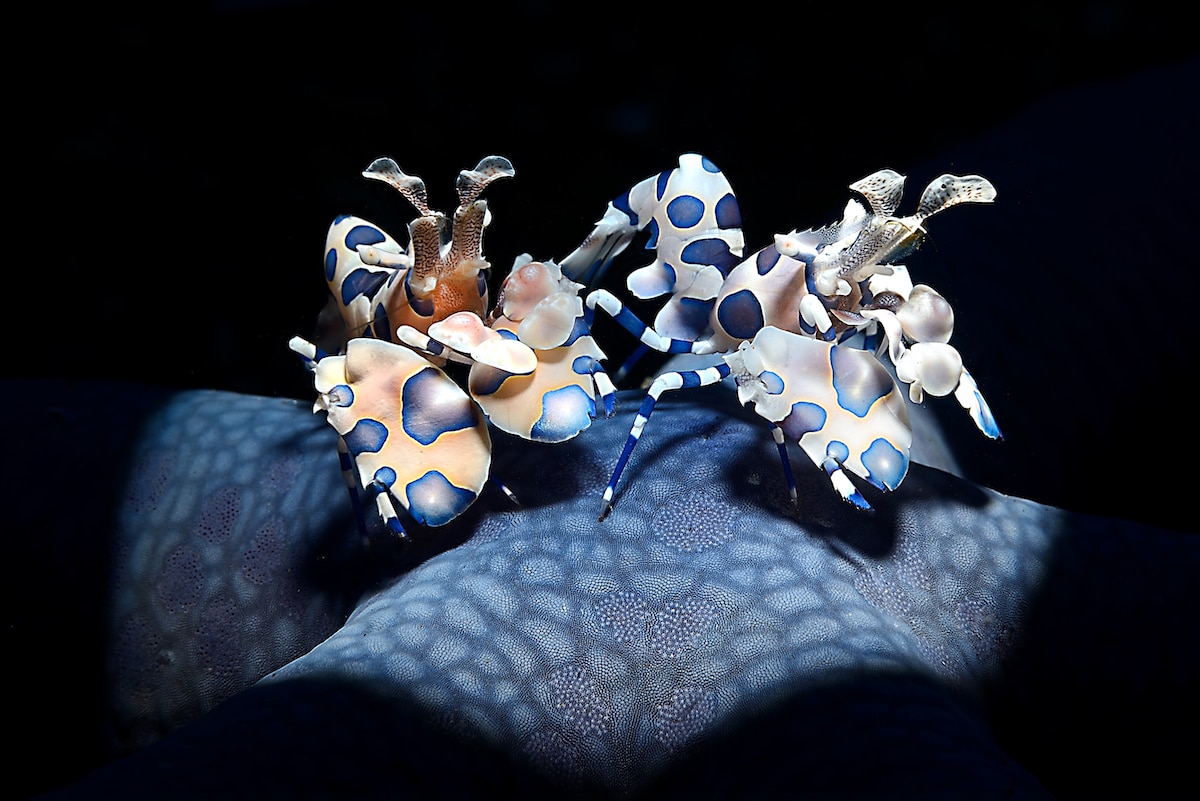
“Harlequin Shrimps” by Adriano Morettin (Italy). Finalist.
“These Harlequin shrimps (Hymenocera picta) are feasting on a blue star (Linckia laevigata) in the Lembeh Strait, Indonesia. Breeding pairs stay close together, remaining active and hunting for echinoderms (starfish) during the day. They stand on top of their prey to immobilise it and then flip it over to access its tube feet. To showcase the beautiful details of the shrimps and highlight the lace-like patterns of the starfish, I used a flash (SEACAM Sea Flash 150) with snoot (a Retra LSD).”

“German Wasps” by Alan Clark (UK). Finalist.
“German wasps (Vespula germanica) are similar in appearance to Common Wasps but tend to be larger. They can often be seen gnawing on exposed wood, which they chew, mix with water from puddles and then turn into building materials for their nests. These two were spotted in a garden in Lancashire in 2020 and photographed from a hide near their nest. I used two flashes to freeze the action.”
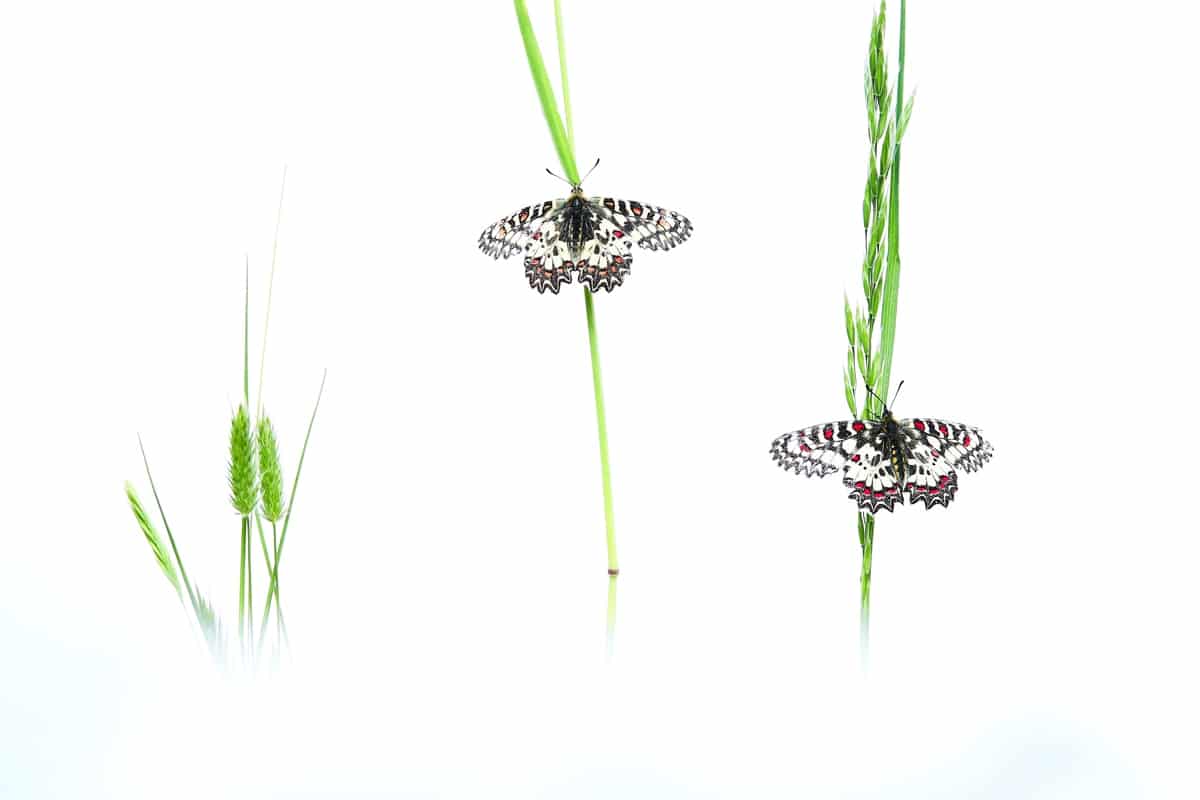
“Hidden Treasures” by Javier Lafuente (Spain). Finalist.
“Having located two Spanish festoon (Zerynthia rumina) butterflies at sunrise in Bustarviejo (a small village in the mountains of Madrid, Spain), I knew I had to act fast. At times like this you only have a few minutes to set up your equipment and fire off a few frames before the insects warm up and fly off. I used a piece of white cardboard for the background, which I illuminated with two Godox HSS flashes. I had a desired image in mind, and I’m pretty confident with flash, which helps when time is against you!”
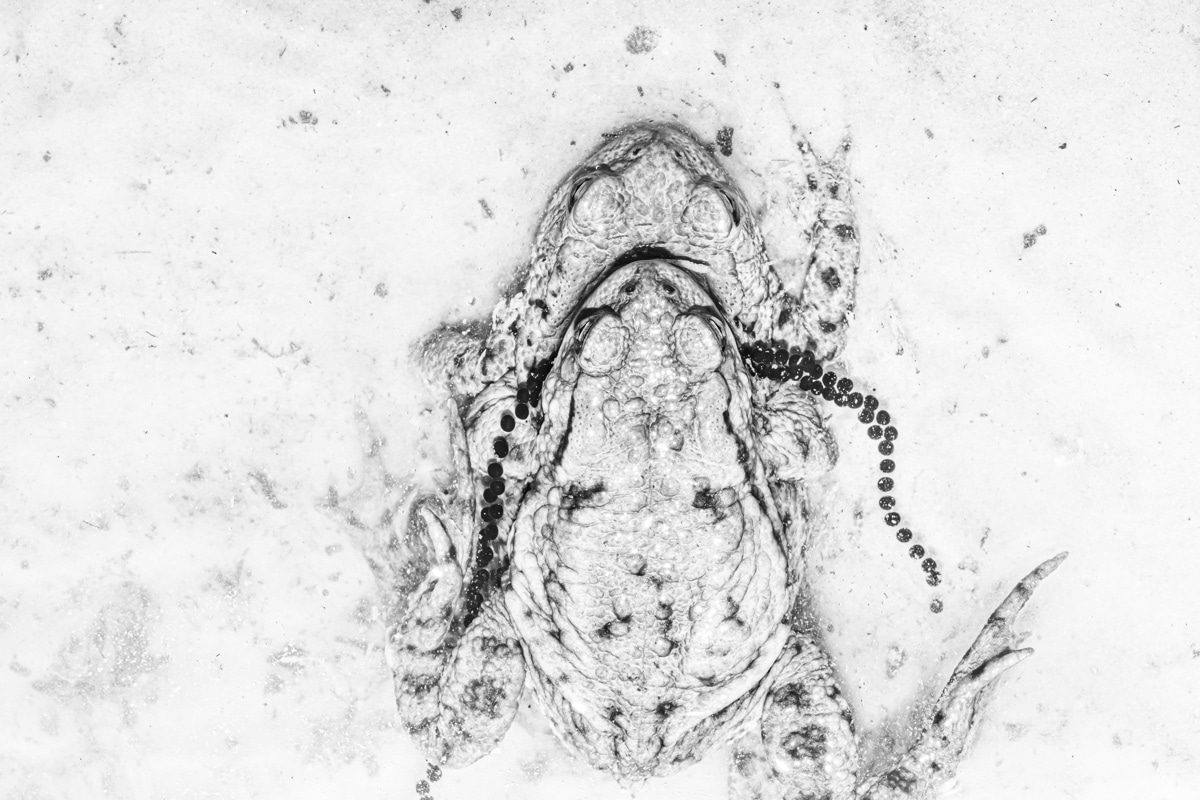
“Toad Love” by Rob Blanken (Netherlands). Finalist.
“Loads of common toads (Bufo bufo) come to mate in a small lake in Drenthe, the Netherlands, where this image was made. Here, the male is clutching the female in a tight embrace. When they’re not mating, common toads tend to live away from water, preferring moist, shady places like damp wood piles and deep leaf litter. When I spotted these two, I especially liked the egg string, which looked like a present from the male to the female. I converted the image to black & white to give it a more intimate fee.”
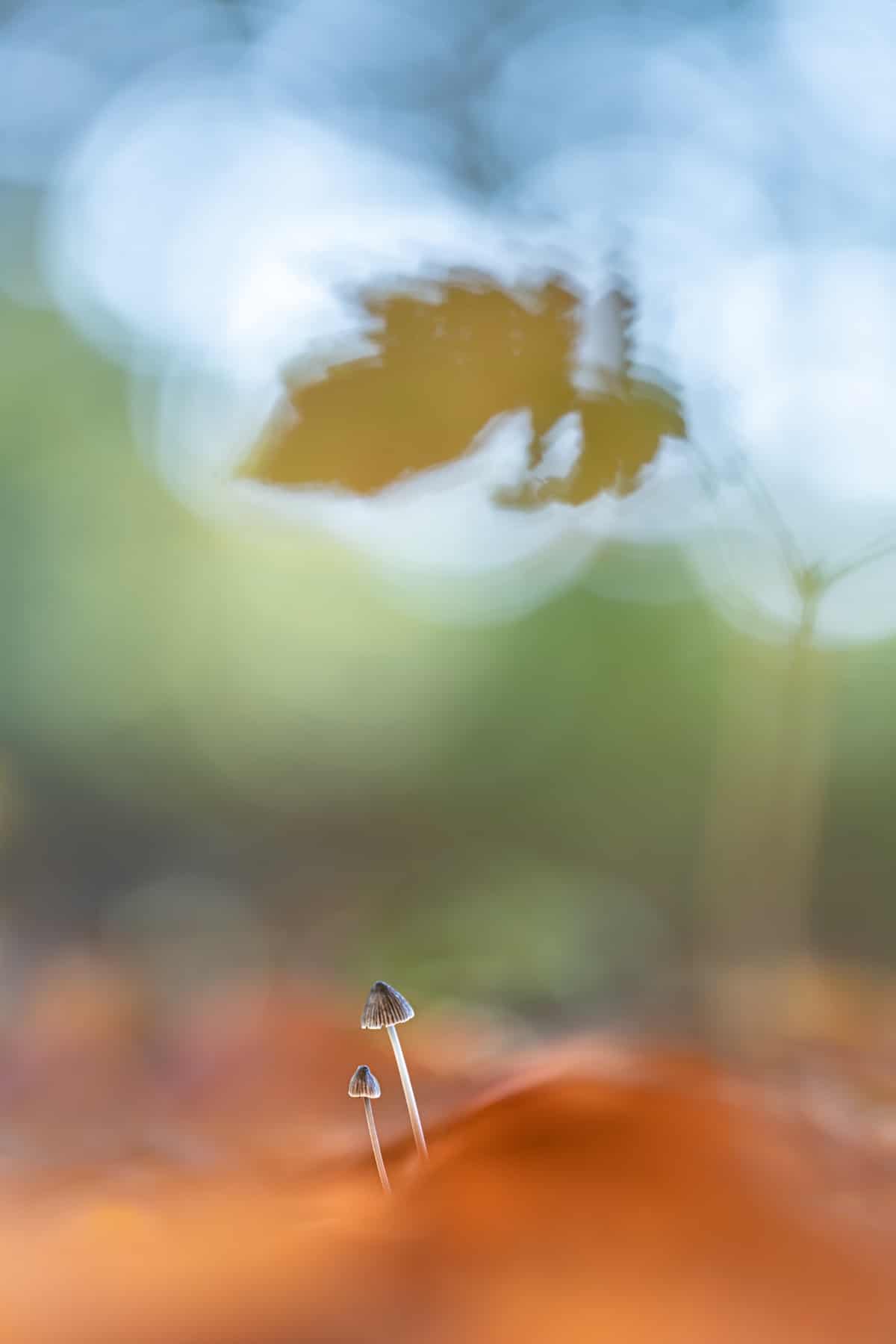
“Mushrooms in the Spotlight” by Ria Bloemendaal (Netherlands). Finalist.
“I took this photo in October 2021 at the Wamberg Estate in Berlicum, Netherlands. It was three o'clock in the afternoon and the natural light was not special. My eye fell on these two little mushrooms. In the foreground was a seedling of an American oak. It seemed as if the American oak gave shelter to the little mushrooms, which really captured my imagination. I used a fill light to brighten the mushrooms and it brought out a beautiful orange glow of the brown beech leaf in the foreground.”
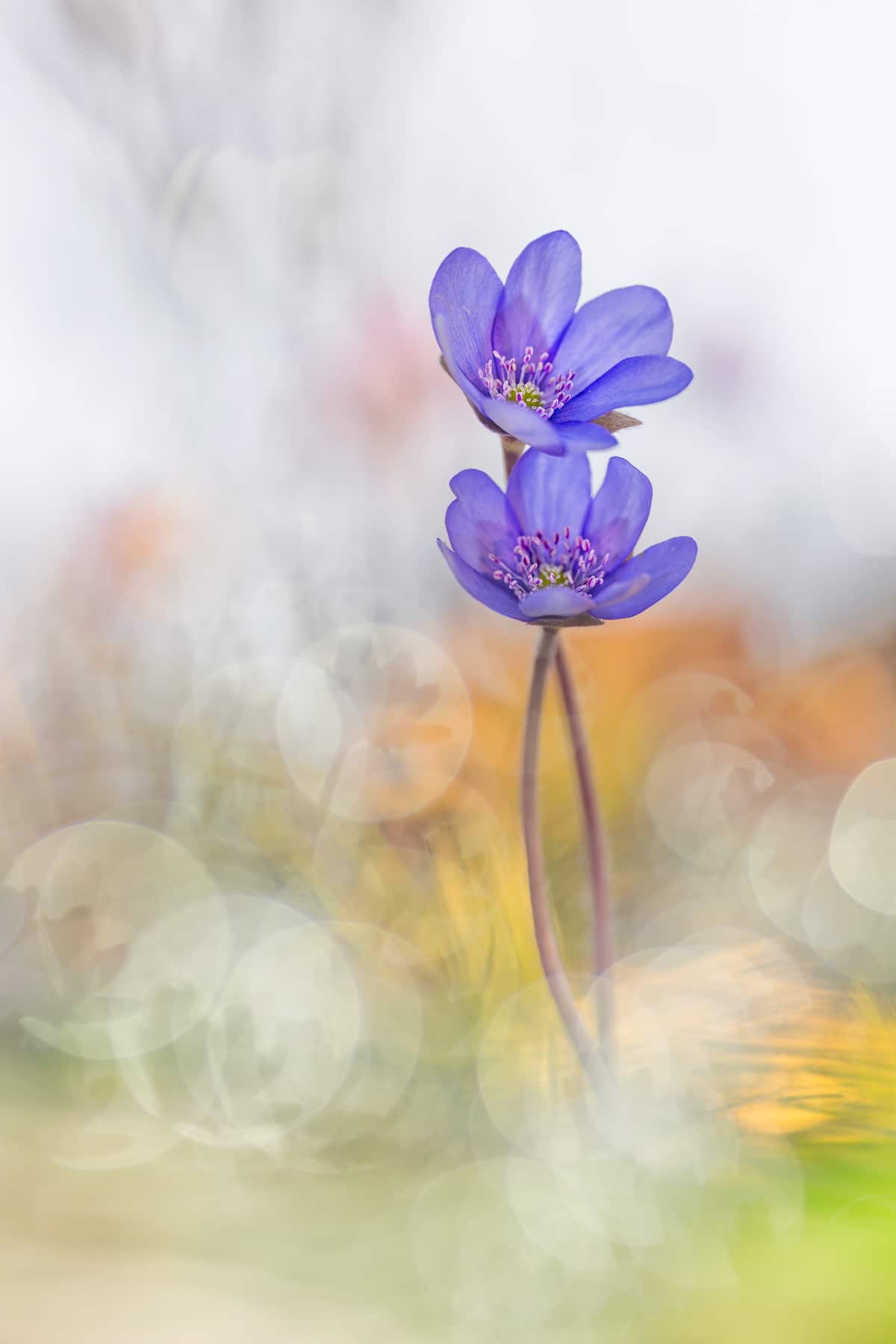
“The Couple” by Henrik Spranz (Germany). Finalist.
“Liverleaves are early bloomers and one of the first wildflowers I photograph every year. On this occasion (at the beginning of April) the sky was hazy, so I decided to photograph the liverleaves on a hilltop, set against the sky. I paired natural light with flashlight to achieve attractive bokeh, while still keeping the overall feel of the image soft and natural. I used a wide aperture (f/3.2) on a long macro lens (180mm) to increase this dreamy feel. Focusing in these conditions isn’t easy, but with the help of Live View and Manual Focus it’s manageable.”

“Dysdercus Concinnus Coitus” by Hugo Camacho (Colombia). Finalist.
“Cotton bugs (Dysdercus concinnus) mating in the woods. Rajada Stone Reserve, San Antonio del Tequendama, Cundinamarca, Colombia.”
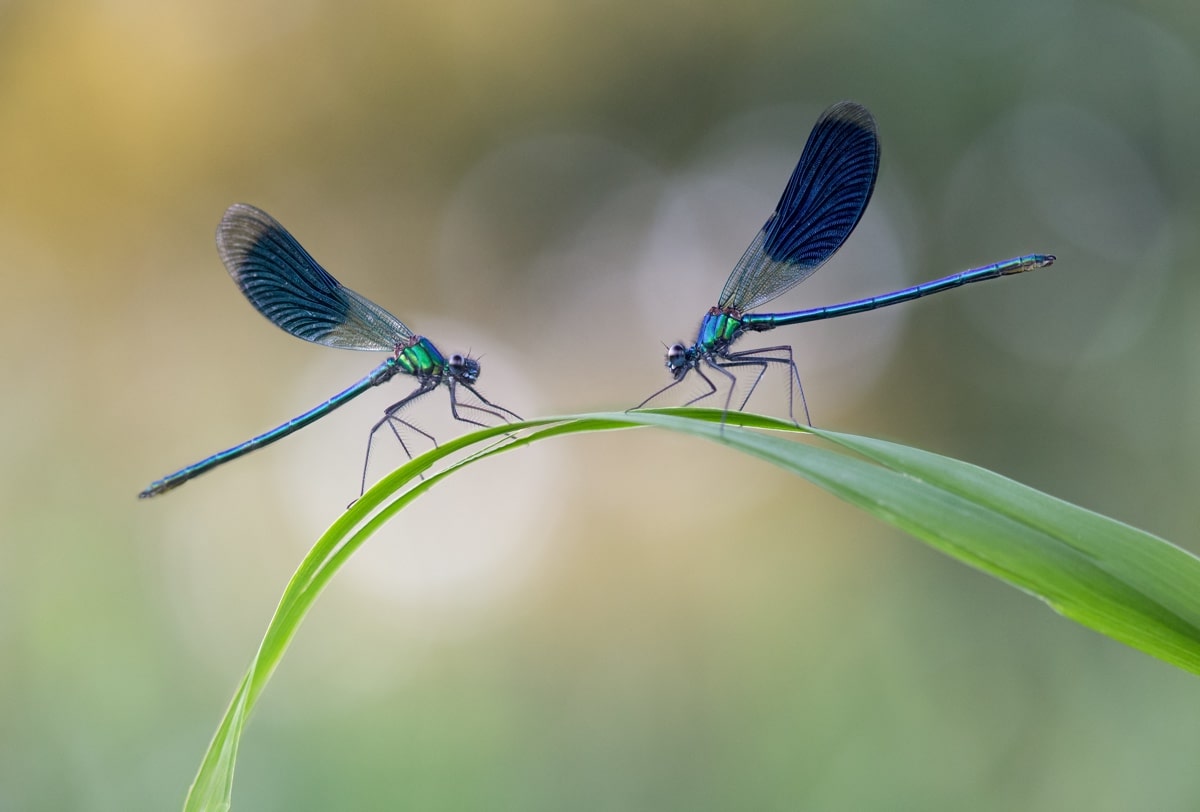
“Blue Beauty Morning” by Roelof de Hoog (Netherlands). Finalist.
“Damselflies like running water, so early one summer’s morning I headed to a brook to see what I could find. After a while I came across two males warming themselves up. They were in the ideal position for a picture that I had in mind – facing each other with a nice, uncluttered background. I used a wide aperture to create some attractive bokeh behind the insects – it made them look as though they were spot lit. Accurate focusing is crucial in a shot like this, so I took two pictures with different focal points and blended then together so that both damselflies were sharp.”

“Eating Perch” by Luc Rooman (Belgium). Finalist.
“This photo was taken during a night dive in Domein Muisbroek, Antwerp during the open Belgian underwater photography championship that I eventually won. It’s actually a lucky shot because the big perch didn't swallow the smaller perch right away, allowing me enough time to take a series of photos before the smaller fish is eaten.”
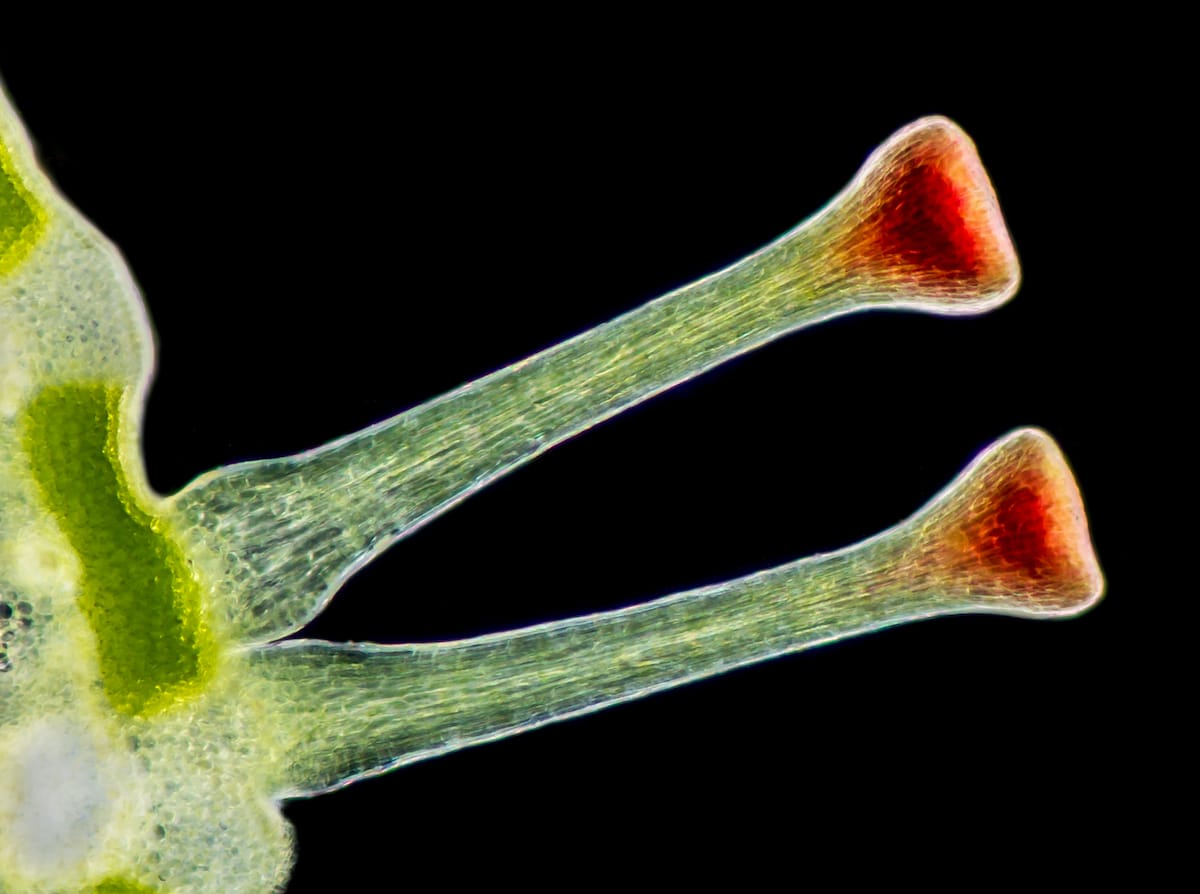
“Sonchus Asper Flower Stem Section” by Gerd A. Günther (Germany). Finalist.
“This photomicrograph is of a flower stem of Sonchus asper (spiny sowthistle), a common thistle with wonderful yellow blooms. All over the plant stem, in a high density on the flower stems, these plants have tiny little hairs with red, small tips. Two of them are shown here with a cross-section of a flower stem.”












































































